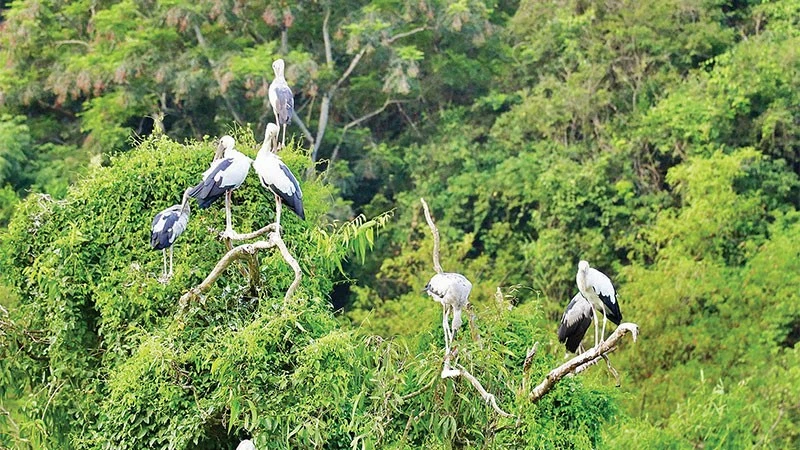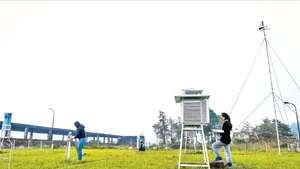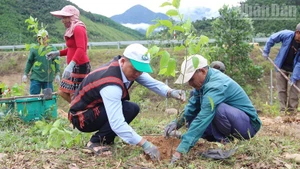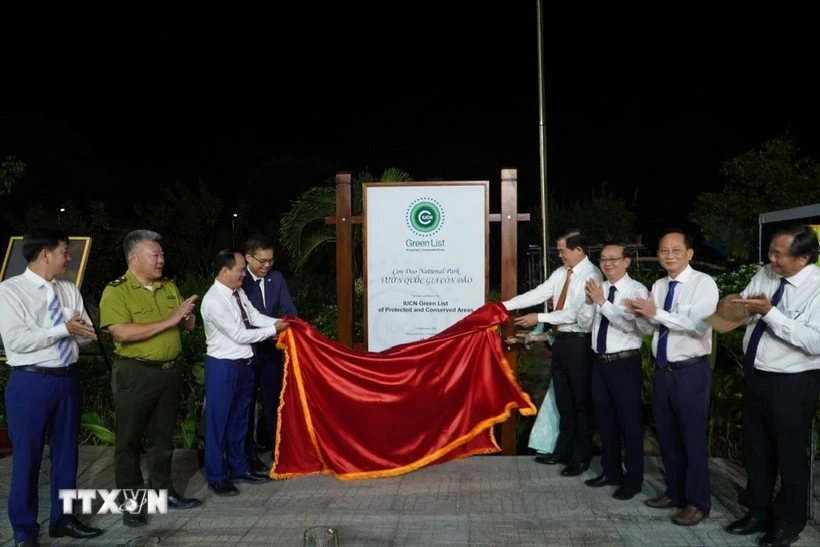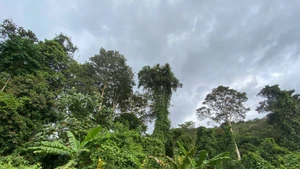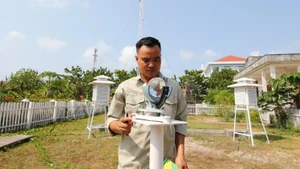To ensure sustainable conservation in harmony with economic development, the bird garden has been actively managed and conserved by Ninh Binh Province; emphasis is placed on organising safe ecotourism tours, enabling visitors to get closer to wildlife while helping to spread the message of protecting the natural environment and preserving biodiversity within the community.
The land of birds
Located in the core zone of the Trang An Landscape Complex, a World Cultural and Natural Heritage Site, Thung Nham Bird Garden covers 18 hectares set amid the cool, emerald waters of Tien Lake.
Since ancient times, this natural lake has held an important place in local life, not only as a source of abundant aquatic resources but also as a sacred site linked with spiritual practices.
With its location nestled deep within primary forest and surrounded by undulating limestone mountains forming a natural protective wall, this place has become an ideal “home” for birds to come and reside, with around 5,000 nests of various kinds belonging to more than 40 species, such as: Co, Vac, Diep, Le le, Mong ket, Chich choe lua, Sao da…
Notably, there are two rare species listed in the Viet Nam Red Book: Hang Hac and Hong Hoang (great hornbill); among them, Hong Hoang—a bird with spiritual significance—is regarded as a symbol of nobility, virtue and good fortune.
Having worked as a boatman for more than 10 years, Dinh Quan Phuong said that this area used to be a muddy, desolate, and overgrown valley; thanks to reclamation, restoration, and care by the tourism area, Thung Nham Bird Garden has now become a stopover for many bird species, with numbers increasing year by year.
Bird flocks gather in the garden throughout the year, but the peak season for observation is from the eighth to the fourth lunar month each year.
Visitor Nguyen Thi Trang, from Ha Noi, said: “Throughout the tour, the boatmen not only introduced us to the unique ecosystem, the living habits of each bird species, and the ecological value of the bird garden, but also constantly reminded us to comply with the site’s rules, such as not making noise, not littering, and not approaching nesting areas so as not to affect the birds’ natural life. This was not only a sightseeing trip, but also a lesson in the connection between humans and nature.”
Each bird species in Thung Nham has its own beauty, creating a vivid, multicoloured picture of wild nature.
In winter, only a small number of birds migrate southwards; the majority remain in the garden and thrive as spring and summer arrive.
Conservation in harmony with benefits
Thung Nham Bird Garden is not only a standout destination of Ninh Binh, but also a strategic element in the province’s orientation towards sustainable tourism development. It is a unique ecological complex where tens of thousands of individual birds of many species reside, associated with a system of wetlands, caves, orchards, and local culture.
Recently, Thung Nham was awarded the “VITA Green” certificate, Excellence level, by the Viet Nam Tourism Association, recognising tireless efforts in conserving biodiversity and developing responsible tourism.
According to Cao Thi Hoa, General Director of Thung Nham Ecotourism Area, after more than 20 years of operation, the conservation of nature has always been the top priority of the site.
Protective regulations have been promulgated and strictly enforced to minimise any impact on the flora and fauna ecosystem. In the bird garden and special-use forest areas, there is a patrol team on duty 24/7.
Measures include building small weirs to store food sources or providing a small amount of supplementary feed for birds during low seasons, and planting trees in areas where flocks gather to build nests; at the same time, strict rules are applied to visitors regarding keeping the area clean and quiet; active coordination with local authorities is carried out to raise public awareness against hunting and to protect flock numbers when birds fly out to forage.
In recent times, the Ninh Binh tourism sector has worked with authorities, the tourism area, research institutes, and the community to implement many conservation solutions aligned with international approaches of the International Union for Conservation of Nature (IUCN) and IUCN partners in assessing and managing the conservation status of bird species globally, providing information for the Red List (BirdLife International).
These include monitoring water quality, planting additional native trees, tracking bird numbers and migration seasons, as well as organising environmental education activities for pupils and students.
At the same time, emphasis has been placed on developing eco- and community-based tourism models that both create livelihoods for local people and bind them to conservation responsibilities.
According to Pham Duy Phong, Deputy Director of the provincial Department of Tourism, within the development strategy, Thung Nham is the highlight for Ninh Binh to affirm its brand of eco-tourism–experience–exploration, complementing its already famous cultural–spiritual–historical values.
The garden’s location also helps diversify tourism products, extend visitor stays, and elevate Ninh Binh’s image as a “green destination” in the region, enriching the province’s overall tourism offering.
